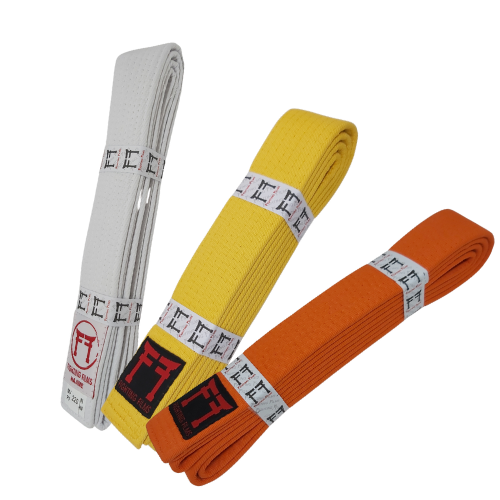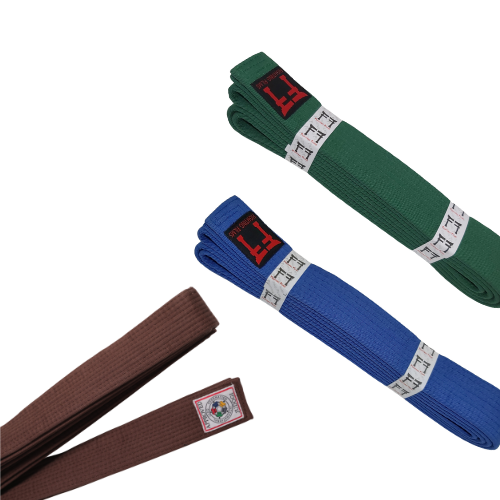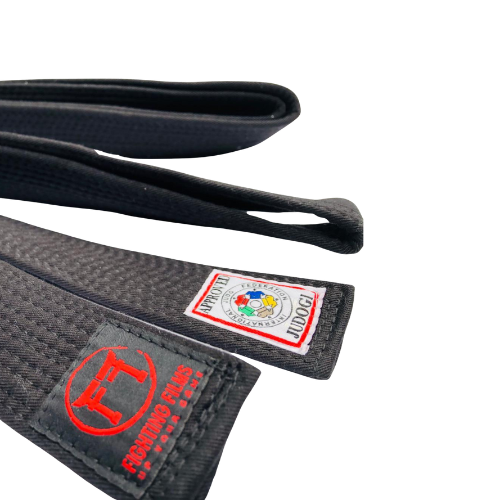Judo is a Japanese combat sport that emphasizes technique rather than brute strength. An important part of judo practice is progression through the belts, which symbolize a practitioner’s level of skill. In this article, we’ll explore the different belts in judo and what they represent.
The judo belt system is based on six skill levels, each symbolized by a different color. Beginners start with the white belt, then progress through the yellow, orange, green, blue and brown belts. The black belt is considered the pinnacle of progression, although further levels can be reached as dan (which means “level” in Japanese). Judo mastery is associated with mastery of body and mind.
The first belts: the basics of judo
The white belt is the first belt obtained by all judo practitioners. It symbolizes the practitioner’s state of purity and innocence, just beginning his or her judo journey. Subsequent belts are obtained by passing exams, which test the practitioner’s technique, knowledge and attitude. The higher the belt level, the more difficult the exams.
The yellow belt is the first step in the progression beyond the white belt. It represents the practitioner’s growth and development, as well as his or her ability to apply basic judo techniques.
The orange belt symbolizes maturity and strength, and is obtained after the practitioner has demonstrated a deeper understanding of judo techniques.

Intermediate belts: towards mastery of techniques
The green belt represents the expansion and continued growth of the judo practitioner. Techniques become more complex at this level, and the practitioner must demonstrate a deeper understanding of strategy and tactics in competition.
The blue belt symbolizes the sea, which is vast and deep. Practitioners at this level must have an even more in-depth knowledge of judo techniques, as well as the ability to adapt their strategy to suit their opponent.
The brown belt is the last step before the black belt. It represents the practitioner’s depth of knowledge and experience, as well as his or her ability to teach and guide other practitioners. The examinations for this belt are very demanding, often involving the demonstration of complex techniques and sophisticated strategies.

The black belt: A mastery of judo
The judo black belt is the highest belt in the judo belt system and is considered the ultimate symbol of mastery of this Japanese martial art. It represents the culmination of many years of practice and sustained effort, as well as in-depth knowledge and understanding of judo techniques.
Beyond technical skills, the black belt also symbolizes a high level of discipline, respect, perseverance and responsibility. Practitioners who have achieved black belt status are expected to have acquired a deeper understanding of the spirit of judo and the values that underpin this martial art, such as honor, humility, mutual aid and moderation.

However, it’s important to note that the black belt is not the end of the road for a judo practitioner. On the contrary, it marks the beginning of a new chapter of development and learning. Top-level judo practitioners continue to train and improve their technique, strategy and understanding of the martial art, as well as helping to train the next generation of practitioners.
Ultimately, the black belt is a symbol of excellence and dedication to the practice of judo. It embodies the values of judo and is considered an honor and a distinction among judo practitioners.
If you’re a judo practitioner looking for a belt or even a judo kimono, discover all our products on our website or in our store at 1 rue des Messageries 75010 Paris.
Don’t hesitate to join our community on social networks to find out all about our latest news.


